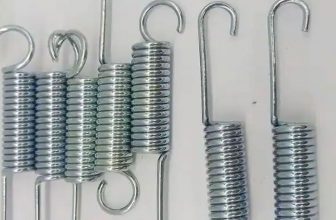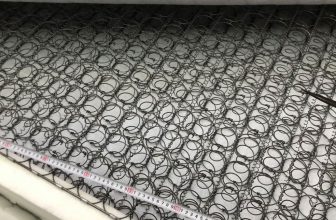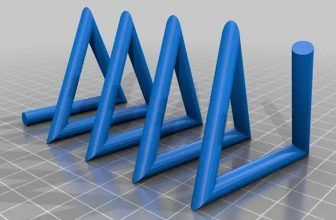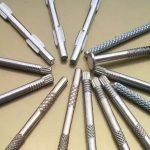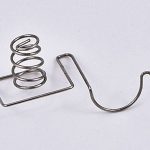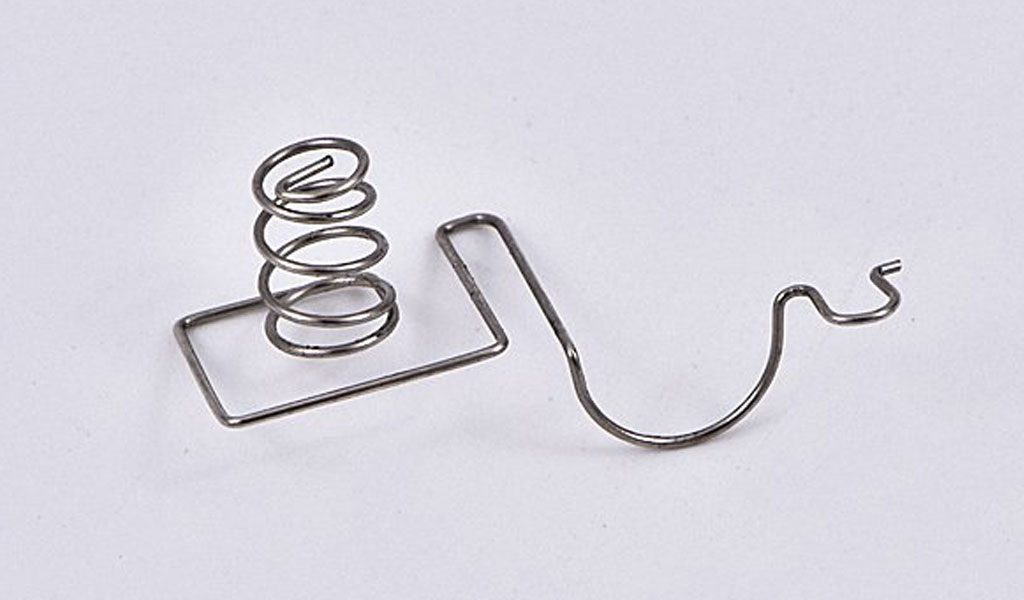
The coiling characteristics and methods of springs are divided into cold coiling method and hot coiling method. Cold winding method: When the diameter of the spring wire is less than 8mm, the cold winding method is adopted. High-quality carbon spring steel wire is usually first cold drawn and then heat treated. After winding, it is generally not quenched, but only tempered at low temperature to eliminate the internal stress during winding. Hot-rolling method: Springs with larger diameter (>8mm) spring wire should use hot-rolling method. Hot rolled springs must be quenched and tempered at medium temperature.
The Design Process Of Various Springs
- Installation space: When designing a compression spring, it is necessary to have a clear understanding of the space required for the installation of the spring, in order to effectively grasp the basic manufacturing conditions of the compression spring, including the outer diameter, inner diameter and free length.
- Dynamic stroke load: In the design of the compression spring, the position to be activated and the required bearing capacity must be clearly understood. Determine the location of the desired elasticity, then you can determine the material, wire diameter, number of turns.
- Environmental factors: When the spring works in different environments, it will be affected by environmental factors and affect the service life of the spring. Therefore, designers must consider changes in ambient temperature and humidity. Temperature has a great influence on the service life of the spring, and humidity is easy to oxidize the spring without surface treatment. Therefore, environmental factors can determine whether the spring needs surface treatment and material selection.
- Spacing at both ends: The two ends of the tension spring will affect the shape of the hook and the free length of the tension spring. Space can determine the size and outer diameter of the contacts.
- Pre-tightening force: The pre-tightening force determines the material of the spring and the diameter of the steel wire, and the size of the fastener can adjust the pre-tightening length.
- The outer diameter of the main shaft: the inner diameter of the torsion spring can be determined according to the size of the main shaft, but the change of the spring body after torsion should be considered, and an appropriate allowance can be reserved.
- The inner diameter of the installation space: When the torsion spring installation adopts the “in” type, the “in” type space should be considered. The space determines the outer diameter, free length and number of turns of the spring body.
- Torsion fulcrum: The torsion spring must have a fulcrum when it works. This fulcrum can determine the length and form of the torsion bar.
- The starting and ending points of the action: the angle position between the torsion bar and the fulcrum when no work is done can clearly define the length and form of the torsion bar and the angle between the torsion bar and the fulcrum bar.
The Spring Winding Method
- The hot winding of the spring generally means that the spring wire diameter D must be greater than 8mm before the hot winding can be used. When the spring is rolled in a hot state, quenching and tempering must be carried out before rolling. Only then can a spring produced by hot rolling be considered a better spring.
- The cold winding method generally refers to the cold winding method only when the diameter D of the spring steel wire is less than or equal to 8mm. In the cold state, the commonly used coil spring material is cold drawn and preheated high-quality carbon steel spring wire. After coiling, quenching is generally not performed. Only low temperature tempering can eliminate the internal stress during the coiling process.
The Winding Process Of The Spring
- If the outer diameter of the spring is close to the free length, the specification will also cause problems. When the outer diameter approaches the free length, the spring tends to lose its directionality in the fixture, causing parts to jam and assembly equipment to shut down.
- There are so many types in shape, size and material that it is difficult to choose the right disposal tissue from the box. The design of the spring can vary if it is not a single shaped product. In general, the allowable tolerance of the spring is slightly larger, so straightness, length, outer diameter, cleanliness, etc. should be considered more widely when feeding.
- How to submit the spring is the key. Generally, springs are supplied in bulk and can be bagged at will. Springs are best served in a pan if possible, or in any other way that they can be served individually. We’re seeing more of that in Europe.
- There are many media supply systems available for bulk springs. They take into account the design of the spring, the difficulty of separating the spring, and the feed rate that needs to be achieved. If a fully automatic system is required, or if a spring is too difficult to separate and feed, in-line winding of the spring is a good solution, and in many cases the best solution. In-line winding of the spring eliminates all winding problems. Springs can be wound and cut as required. Only supply one spring to the operator at a time or directly to the assembly point.
- In addition, in-line cnc machining can use resistance heating to process springs, and can also measure spring force, spring length and diameter. In this way, only qualified springs (including extension springs, special-shaped springs, torsion springs, etc.) that meet the specified tolerances can be supplied to the final assembly. Any springs that exceed the specified tolerances must be removed prior to assembly.




